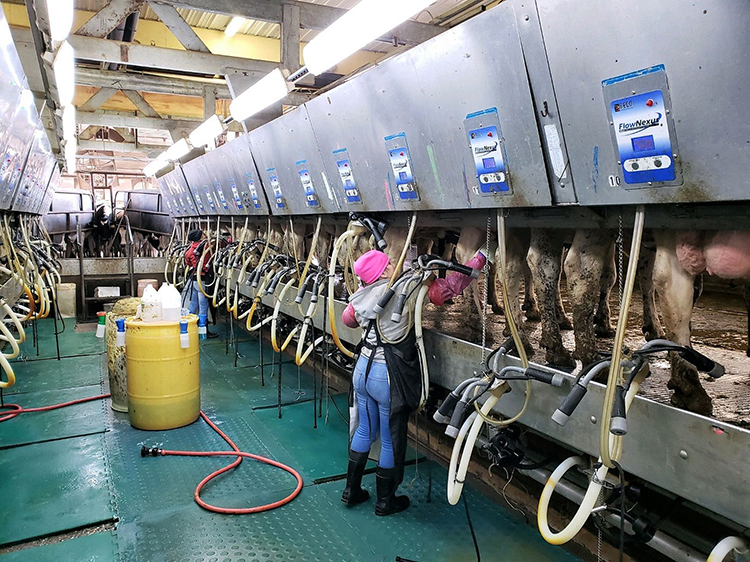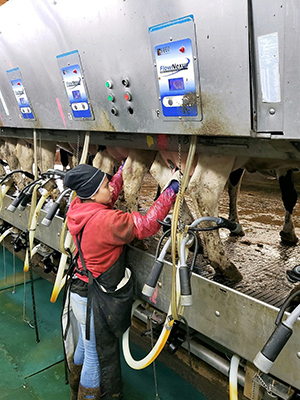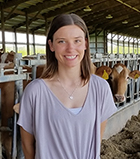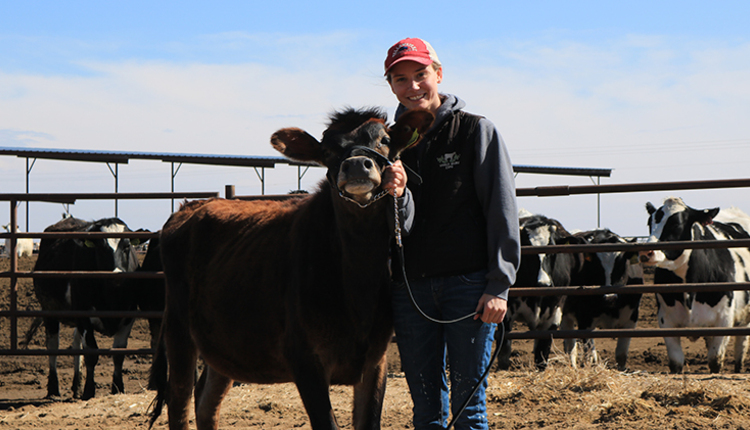
Having eyes on your parlor all the time doesn’t sound like a bad thing. You could catch dirty filters, faulty machines, and mastitis cows before they got bad and before they took a toll on your milk production.
Designating or promoting employees as parlor shift leads can ensure that proper protocols are followed, as well as oversight of the wash cycle and milking machines. They can also record milk abnormalities and dirty, lame, or sick cows.
On my family’s farm, my older brother Jacob started incorporating parlor shift leads about five years ago. Since then, we have lower somatic cell counts (SCC) per cow, improved system management, and overall happier employees milking our cows.

What are their responsibilities?
Our parlor shift leads change filters, start and monitor the wash cycle, and assess protocol of the other milkers. We also teach them and trust them to train new employees. Depending on the person’s leadership style, they may also reprimand employees directly or flag a manager and have them talk to the employee.
Something we have noticed is that people working in our parlor like having a shift lead who they can go to with problems or questions and get an immediate response.
Along with this, we ask the shift leads to check in with managers once a day to give feedback or ask questions.
How to choose them?
We do not necessarily choose a milker who has been there for a long time. Instead, we identify an employee we trust. They must want the job and show initiative. Employees who ask questions, come to you when they have problems, and have a good attitude are great candidates.
Giving incentives?
We know we are asking more from our parlor shift leads, and because of this, they make more per hour compared to a regular milking position. Other farms may share a portion of SCC premiums with shift leads and employees.
If you want to see improvement in the parlor and keep your employees happy, it is a good idea to consider incentives. Set goals for your parlor staff like SCC, production, or cleanliness and reward them when they make these goals.
Your greatest tool
The greatest tool you can give your employees is knowledge. Telling workers what the milking SOPs and protocols are is not enough. Verbalize and show them how stripping the teats, drying them completely, properly attaching the unit, and covering the entire teat with postdip can affect cows and milk production.
Something we need to remember is that not everyone who works on a farm grew up on one. You might feel like it is overkill to have parlor meetings every other week or even more than once a month, but in most cases it’s not. At each of our bi-weekly parlor meetings, at least one person asks a question and learns something new.
The use of shift leads, along with keeping your protocols simple and reviewing them often, are ways you can improve herd performance, increase parlor efficiency, reduce mastitis incidence, and build employee morale.

Christy Achen was the 2018 Hoard's Dairyman summer editorial intern. She grew up on a dairy farm in southwest Kansas. Achen is currently a senior at Utah State University studying agricultural communications and journalism.
Joins us on April 8, 2019, for our webinar: "Milking evaluation reveals costly problems"
presented by Michigan State University Extension's Phil Durst and Stan Moore
Milking is so routine that we sometimes fail to adequately analyze it. Using milk vacuum recorders, researchers found two common problems: biphasic milking and overmilking. The presentation will discuss the causes and impacts of these issues.








